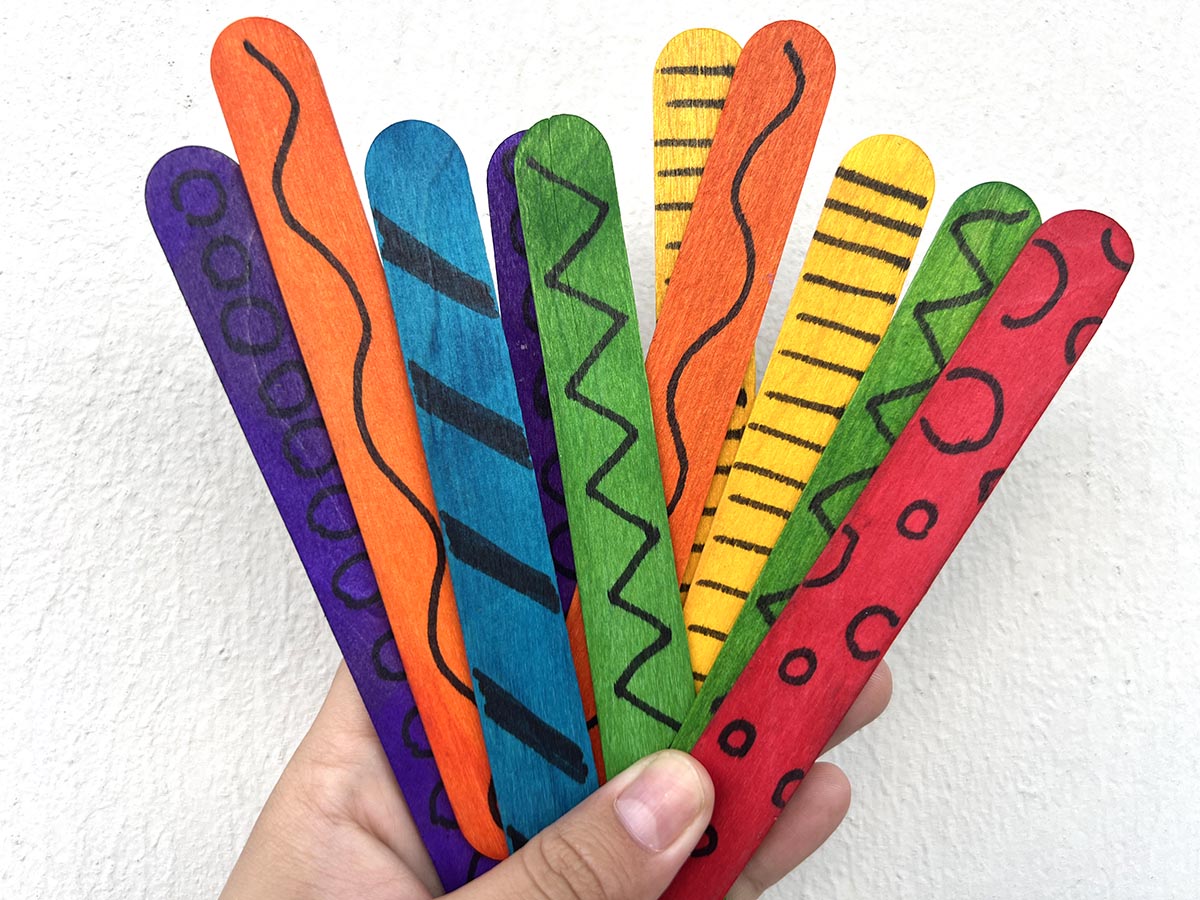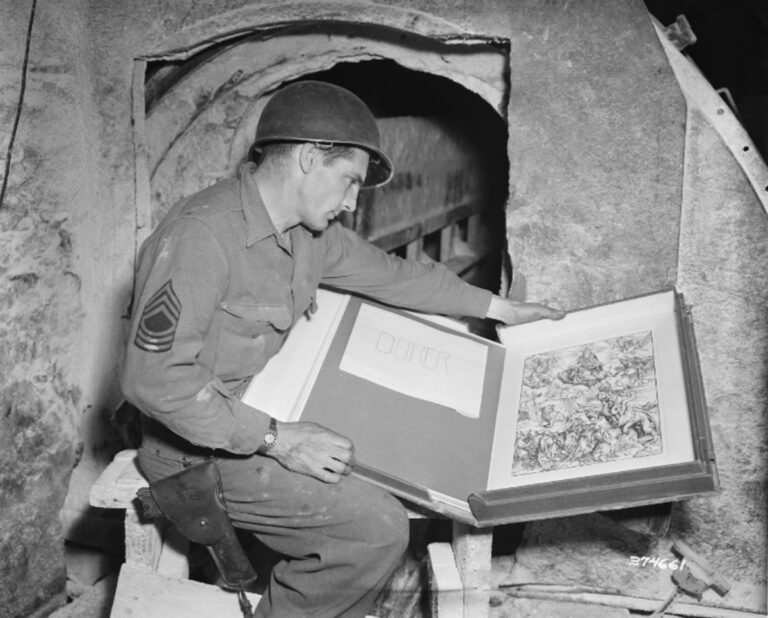“I’m done! What do I do now?” You’ve heard it more times than you’d like to count. Around this eager, expectant learner is a sea of busy artists. You have another early finisher so you start racking your brain for extra things they can do. You need a system in place to keep the learning going without losing your sanity!
Art teachers are constantly navigating how to work with students who learn and create at different paces. Developing a system for early finishers in the art room is crucial to making every minute in the art room as creative as possible. Whether you’re looking to refine your existing early finisher system or build it from the ground up, there are a few things to consider. Get started with the ideas below, and for a deeper dive, watch the Methods for Early Finishers Pack in PRO Learning or tune into the YouTube episode of Artfully Organized, featured below.
Streamline your early finisher system to enhance artistic output and learning. Make strategic changes to your approach for a more dynamic and purposeful structure.
Effective early finisher systems require deliberate planning, ingenuity, and sensitivity to the diverse needs of your budding artists. Implement an approach that balances accessibility, engagement, and time management to nurture student creativity and productivity long after they wrap up an assignment. Optimize your system with the three considerations below.
1. Create a system that is easy to access, explain, and refresh.
Ensure students can readily access the materials and instructions without additional assistance. Keep the setup organized and labeled to allow for independent navigation. Design a system that enables you to easily swap out activities without re-teaching or re-explaining the procedures.
Make your early finisher activities visible, accessible, and manageable with:
- Posters
- Menus
- Stations
2. Add speedbumps to encourage students to spend time on their work.
Incorporate “speedbump” activities into your standard end-of-project procedures to encourage students to invest ample time and effort into their artwork. Students are more likely to spend time on a project if there are extra steps required to check for “quality control” like craftsmanship.
Ask students to complete one or all of these speedbumps:
- Peer Feedback: Ask a friend what you can do to improve your work.
- Clean Up: You left no trace of your artmaking on the table or floors.
- Writing Assignment: Complete an exit ticket to capture your learning.
3. Provide activities based on the remaining class time to reduce mess and stress.
Tailor your activities to correspond to the amount of time remaining in class. This will ensure students engage meaningfully without feeling rushed or overwhelmed. Offer a standard selection of 3-7-minute, zero-mess activities for shorter time frames. Reserve extended activities with more components for longer periods. Track the minutes left on a visible timer so students know which activities are available.
Add these quick, mess-free early finisher activities to your list:
- Practice upcoming skills with drawing packets.
- Free draw on dry-erase boards to save paper.
- Read a book from the classroom library.
Consider the three aspects above to help you thoughtfully orchestrate a conducive environment for your early finishers. Now that you’ve established an intentional system, it’s time to expand your activity repertoire.
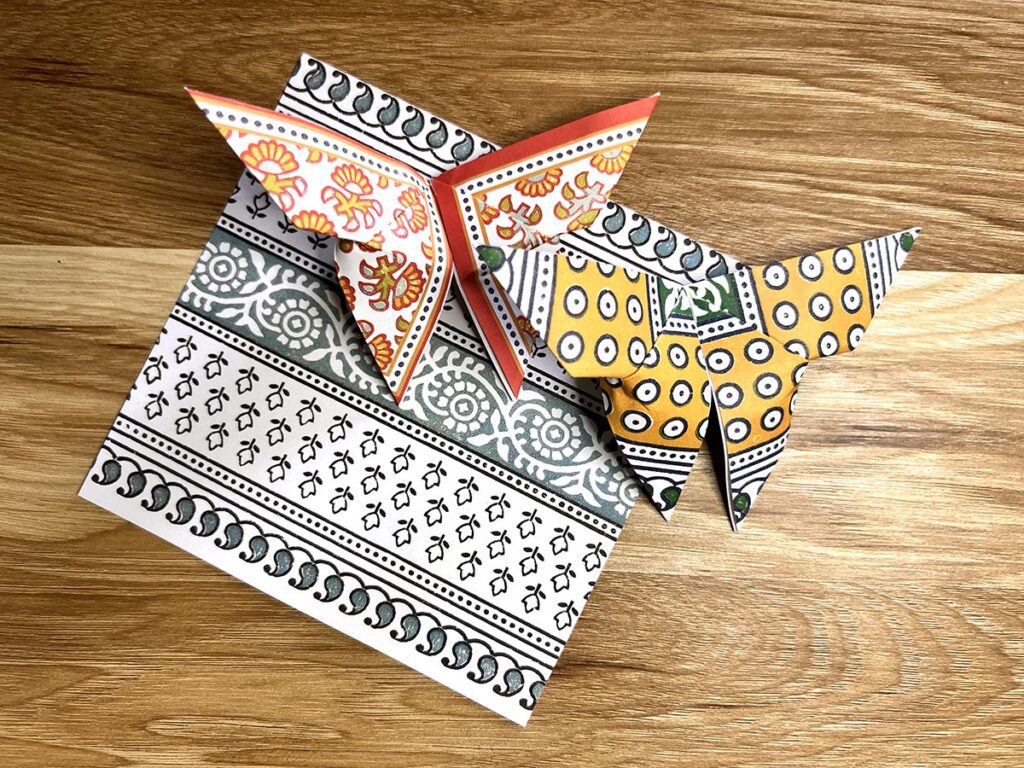
Make every moment count in your art room with these early finisher activities perfect for elementary students. Nurture ongoing creativity through project extensions, drawing, art enrichment, technology, and creative play.
Project Extensions
- Add extra steps to the project.
Experiment with diverse color schemes, unexpected textures, or alternative materials after completing the main task. Plan an extra step for every project. - Set up a project with related content.
Prompt students to create new artwork using the ideas, themes, or techniques they recently discovered. Predetermine the extension project or let students independently explore. - Engage artists in a long-term side project.
Introduce ongoing art endeavors for students to work on at their own pace, such as artist trading cards (see below) or an original comic book. These passion projects engage students in artmaking that interests them.
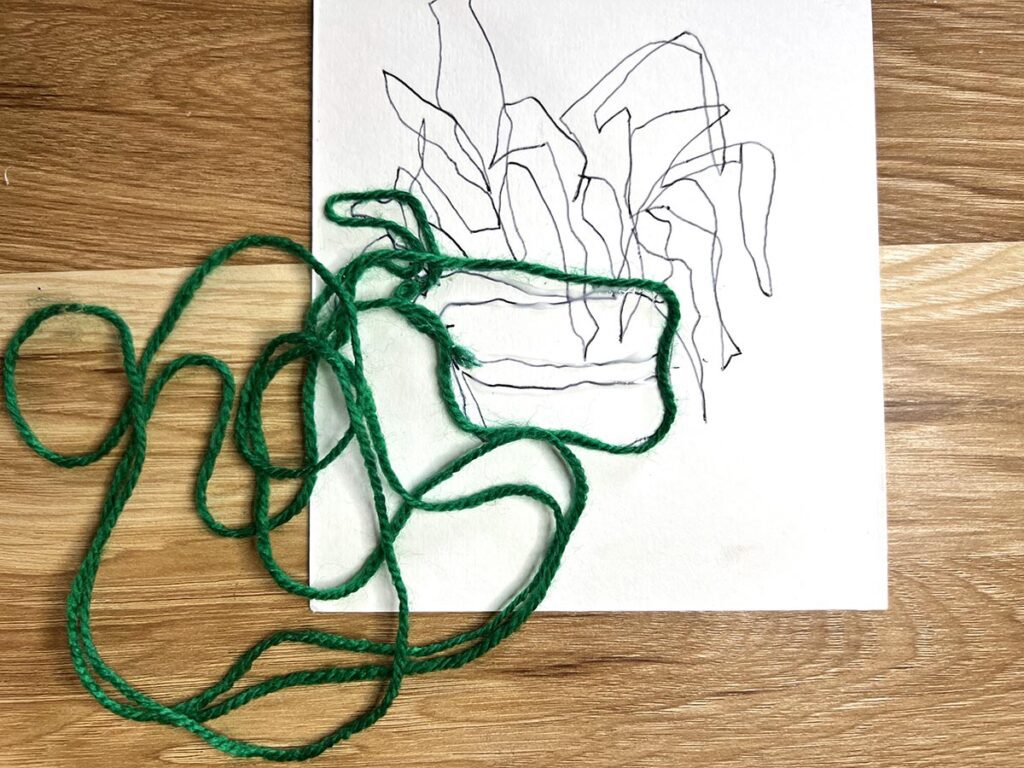
Drawing
- Curate drawing prompts.
Instead of “How to Draw” books, students craft their own creative prompts and organize them by themes in binders for other students to access. - Compose structure-free drawings with choice boards.
Students generate imaginative ideas by pairing prompts with visuals. You can integrate themes from your curriculum. - Collect a bag of objects to draw.
Gather pinecones, shells, sunglasses, geodes, or reflective objects in a bag. Students pull an object from the bag and draw the mystery item. - Enhance a contour drawing with string.
Challenge students to do blind contour drawings of objects or classmates. Glue string over the contour lines. - Add a spotlight for shadow drawing.
Set up a spotlight on the edge of a flat surface. Students place a group of objects in front of it and then trace the shadows of the objects on their page. - Print various Roll and Draw sheets.
Provide a selection of Roll and Draw game sheets to dictate compositions. Include blank game sheets for students to create their own around a theme. - Supply Finish the Picture worksheets.
Give students a drawing sheet with a mark, shape, or partial drawing. Challenge students to incorporate the element into a completely new drawing with a background. - Distribute stickers for a Stickermania Draw Fest.
Supply a sticker sheet with 3-5 medium-size stickers. Add stickers to a sketchbook page and create a background or composition to integrate them. - Facilitate optical illusion practice.
Explore optical illusions with how-to guides. Practice each step to create an illusion. Then, incorporate it into a large design with color and value. - Foster collaboration with a school mural.
Set up a large sheet of paper for students to contribute small drawings or elements. Over time, it will become a unique and evolving artwork. Display it in a prominent spot as a collaborative mural.
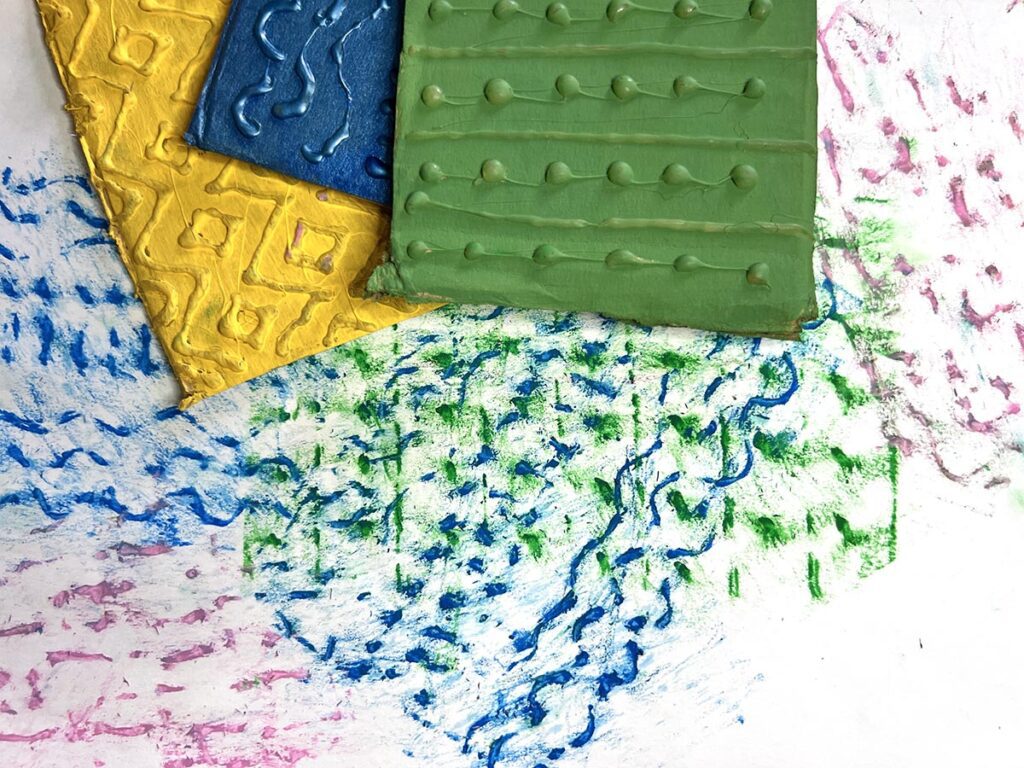
Art Enrichment
- Exchange artist trading cards.
Design small artist trading cards (ATCs) to swap with peers. Make one to take home or make one to leave for another student! - Feed into the folding craze with origami creations.
Provide origami paper and instructions to create various paper sculptures or animals. Allow students to take their creations home or contribute to a large-scale collaborative piece. - Collect stamps to create repetitive designs.
Set out stamps and ink pads to create designs. Enhance the compositions with color. - Experiment with texture plates.
Introduce texture plates and stencils. Experiment to see how they add depth and visual interest. - Create a mood board to describe feelings.
Identify a specific emotion or theme and represent it with a mood board. The mood board can be a collage of images, colors, and words. - Set up hula hoops for weaving collaborative textiles.
Transform hula hoops into giant circle looms to collaboratively practice fundamental weaving techniques. Explore how to teach this skill in the Basic Weaving Techniques Pack in PRO Learning. - Create friendship bracelets.
Explore the craft of jewelry making! Design and make unique pieces using beads and string to share with friends. - Introduce fashion design with outfits of the day (OOTD.)
Print appropriate models for students to draw outfits on. Add fabric swatches, ribbons, and sequins for students to cut and paste onto their designs. - Engage your students in art history with an Art History Remix.
Inspire students to replicate famous paintings with a unique interpretation or modern spin. - Instill artistic behavior with cleaning tasks.
Create a list of tasks to choose from to practice responsibility and ownership, both facets of the artistic practice.
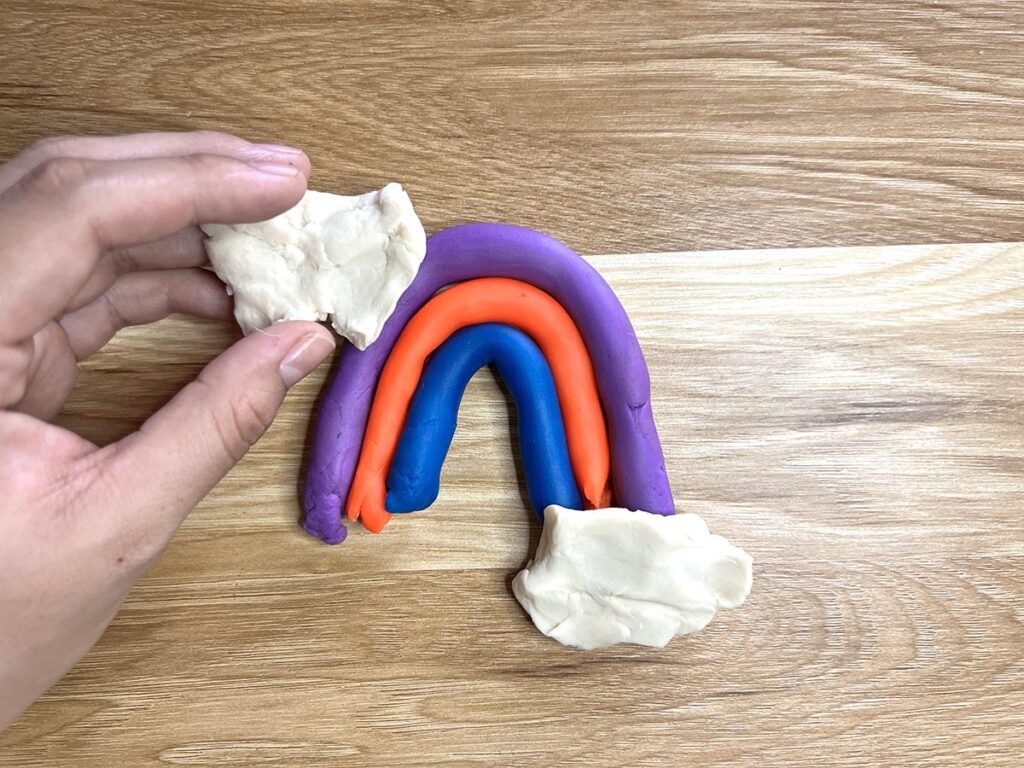
Technology
- Film a stop-motion animation.
Use materials like paper, scissors, glue, or playdough to create scenes. Snap photographs and compile them into short stop-motion films. Explore stop-motion techniques in FLEX Curriculum’s The Art of Stop-Motion Animation Collection. - Simplify animation with interactive flipbooks.
Supply sticky notes or cut scrap paper to make a flipbook depicting sequences or stories. Students can film their flipbooks to animate their work. - Collect props for art history parodies.
Recreate famous paintings in real-life parodies using available dress-up materials and props. Capture the scene by taking a picture of their reproduction. - Introduce coding concepts with pixel art.
Color in squares on graph paper to create pixelated designs or make a digital version. Discover more basic coding ideas in the Introducing Coding with Art Collection from FLEX Curriculum. - Curate YouTube art tutorials for your students.
Offer a selection of art tutorial videos for students to watch. The Art for Kids Hub is a great channel to start with! - Spread positivity with poster messages.
Design posters with positive messages to explore composition and lettering. Print the posters and hang them in your classroom. - Create digital DIY coloring sheets.
Utilize a drawing app to create personalized digital art coloring sheets. Digitally share designs or print them out! - Send on a virtual scavenger hunt.
Search for artworks matching specific criteria, such as abstract, still life, or contains multiple patterns. For detailed instructions, see the Virtual Scavenger Hunt Lesson in FLEX Curriculum. - Snap themed portraits in pairs.
Provide props and supplies to curate characters and make quick backgrounds. Students collaborate to arrange themed portraits. Document with a photo. - Combine gaming and art with PBS Kids Art Games.
Explore games that integrate artistic thinking, imagination, and creation with various known and loved characters. Learn how to structure this and other activities in the Methods for Early Finishers Pack in PRO Learning.
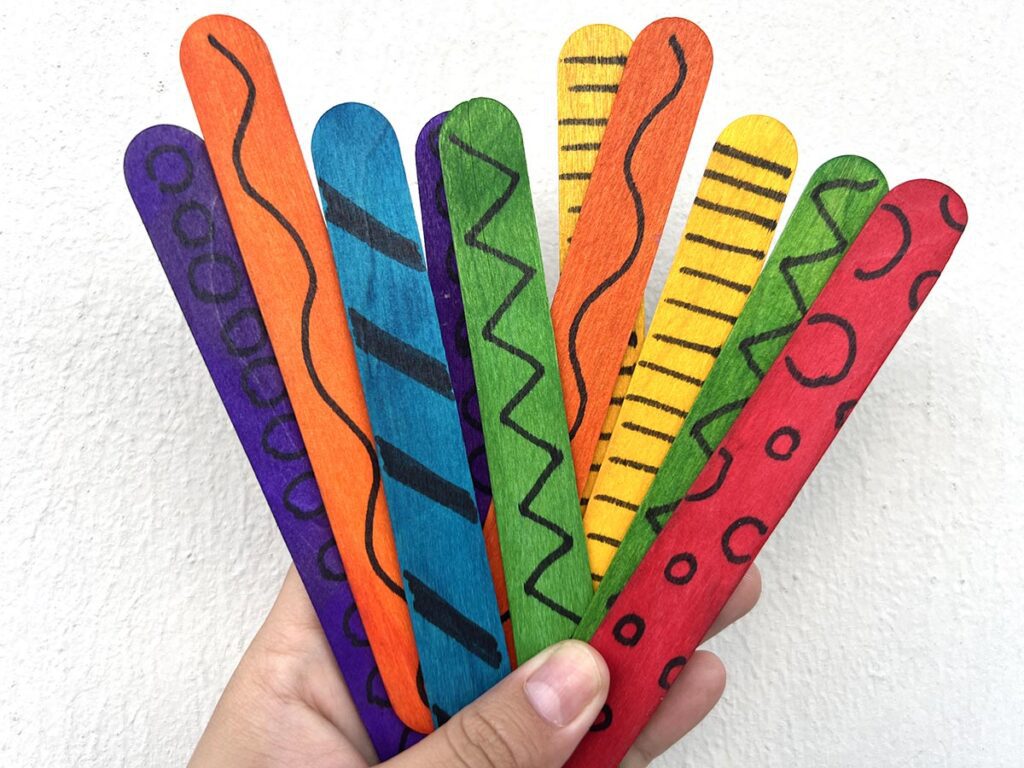
Creative Play
- Set up a sensory table or bin.
Tap into the sensory needs of your youngest learners and open a sensory station. Add sand or rice to give students a tactile, stress-relieving outlet. - Provide magnetic shapes for mosaics.
Create mosaics using magnetic materials to explore patterns and designs. - Decorate wooden craft sticks.
Pre-draw designs on craft sticks. Students match pre-drawn patterns, create their own patterns by arranging the sticks, or draw their own sticks. - Explore playdough.
Provide playdough, rolling pins, wood or plastic clay tools, cookie cutters, and small toys. - Paint objects in ROYGBIV colors for a rainbow sort.
Gather diverse objects of various colors. Students sort them into rainbow sequences to enhance color recognition and organizational skills. - Prepare clipboards for beading practice.
Clamp pipe cleaners onto a clipboard and give students a bucket of assorted beads. String beads on the pipe cleaners to practice fine motor skills. - Collect items for found object sculptures.
Accumulate found objects such as buttons, cardboard scraps, and bottle caps. Construct small sculptures using these items. - Create a Makerspace for design challenges.
Issue challenges to integrate design thinking and pop culture. For five tips on how to set up Makerspace activities, review the Methods for Early Finishers Pack in PRO Learning. - Furnish your room with assorted building manipulatives.
Provide blocks, magnetic tiles, marble run kits, interconnecting pieces, and other similar toys. Students construct and manipulate to foster spatial awareness and critical problem-solving. - Stock up on art games and puzzles.
Introduce games and puzzles for a fun way to reinforce skills like color theory or imaginative drawing.
Restructure your early finisher system and add to your arsenal of activities with the lists of ideas above. In doing so, you will transform spare moments into opportunities for continued artistic exploration in your art room. Long-term side projects, Stickermania Draw Fests, hula hoop weaving, stop-motion animation, and magnetic mosaics all serve as catalysts for deeper creativity and skill development. Establishing an early finisher system will make your classroom run smoother and the artmaking will continue until cleanup. Get ready because you won’t hear the “What do I do now?” question anytime soon!
How do you structure activities for early finishers in your elementary art room?
What new early-finisher activities will you add to your classroom?
Magazine articles and podcasts are opinions of professional education contributors and do not necessarily represent the position of the Art of Education University (AOEU) or its academic offerings. Contributors use terms in the way they are most often talked about in the scope of their educational experiences.
